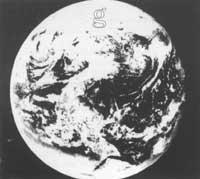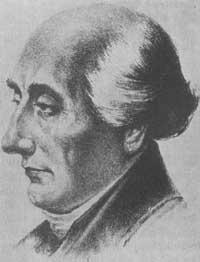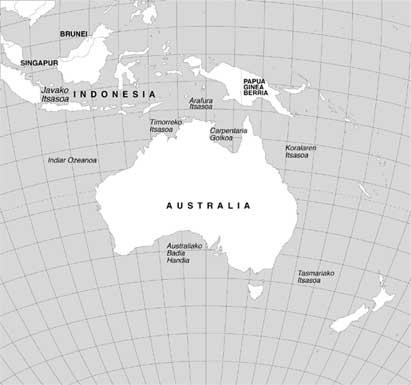Mathematics and Astronomy
Newton and Leibniz, each on their side and almost at the same time, built an infinitesimal calculus. Unfortunately everyone used their own writing. On the other hand, a debate arose to decide who was the honor of inventing. However, it was a break between English and continental mathematicians. The English used the symbols of Newton, but most of them abandoned the analytical path proposed by him to go to the geometric path. Therefore, XVIII. In the first half of the 20th century England devoted little to the development of the new calculus. On the continent, however, thanks to the works of Bernouilli advanced above all.

In the field of experimentation, a vacuum that Newton did not fill was solved in this century, that is, to be able to measure the gravity of the Earth and thus obtain a constant gravity. By 1775 Maskelyn observed the diversion of lead on both sides of a mountain and in 1798 Cavendish was able to analyze the attraction that occurred between two heavy balls by means of a fine torsion balance.
Newton’s works passed to France, where d’Alembert, Clairault, Euler… gave them continuity. Voltaire traveled to England in 1726 and published a simple book on Newton's system. This affected several writers of the famous “Encyclopédie”. The first edition of this work, after overcoming great difficulties, was carried out between 1751 and 1780 in 35 copies. The head was Diderot and in the early years the mathematical area was assumed by d’Alembert. This work was a great support for both the vision and the dissemination of scientific reflection.
In empty and applied mathematics, Taylor — 1715 — and Maclaurin — 1698 — demonstrated how to increase and expand sequences and progressions, which were used in both vibratory string theory and astronomy. Bradley drew the speed of light by looking at the star aberration (1729). Euler, 1707-1783, opened new fields in the analysis of mathematics and made developments in other areas. He also dealt with optics and natural philosophy and published several books.

Joseph Louis Lagrange —1736-1813—, perhaps the best mathematician of the century, dealt mostly with mere theory. He invented the calculation of variations and systematized the field of differential equations. Although his works are theoretical, his use in the field of physics took place and published a work on astronomy in which he revealed a complicated gravitational effect between three bodies. In addition, in his immense work “Maquinque Analytique” he built a mechanics of energy conservation through virtual speeds and principles of minimal action.
The principle of virtual speeds or virtual works that Leonardo da Vinci used to pull the law out of the lever was given by Stevinus of Bruges (1586) as follows: “What gains strength loses speed.” Maupertuis called “action” the sum of the products of space (length) and speed, and based on metaphysical reasons, in some processes (assuming that in the propagation of light, for example, there should be a “minimun”), knew that in reality light was taken by the minimum “action”. Later Lagrange, after rounded up the concept of this action, extended it to the area of movements of all bodies.
The differential equations of Lagrange gave a more general and complete explanation to the theory of mechanics, thus collecting this broad theme to the general formulas, extracting from them the concrete equations necessary to solve each particular problem.
Another big name in the development of Newton's system is Pierre Simon de Laplace (1749-1828). Despite being the son of a peasant, for his qualities, he became marquis in the Restoration. This adapted a very suitable tool to investigate attraction problems, the potential of Lagrange. On the other hand, Newton's work was rounded up in an aspect of great importance, that is, demonstrating that the movements of the planets were stable and that, on the contrary, the changes that caused the forces between them or foreign bodies such as comets were ephemeral. Thus, the solar system itself was relegated to Newton's fear that it would be disturbed through his action.

In 1796 Laplace published his work “Systeme du Monde”. It includes a history of astronomy, a general explanation of Newton's system and an expression of the nebula hypothesis. According to this, the Solar System was built in rotation and shedding a mass of incandescent gas (current science will tell us that it is not very appropriate to create a structure like the Solar System, so small, but yes for groups of stars of greater dimension).
The analytical results of Laplace are mainly found in his work “Cèleste Mechanique”. This is his greatest work, published between 1799 and 1805. In it, among other things, he gave Newton’s “Principia” with infinitesimal calculations, after having made many specifications and adaptations.
Also in the field of mathematics, Laplace accumulated and adapted everything related to probability. In the field of gravitational astronomy, for its part, the result of Laplace was so fruitful that later works have been only a small composition of Newton and his result. Therefore, years later, to express the irregularities and alterations observed in the orbit of the planet Uranus, scientists saw no other way than that of the existence of another planet, and based on the works of Newton and Laplace, they calculated the peculiarities and location of this unknown planet. Thanks to this, after knowing where the telescope should go in 1846, the astronomer Galle saw this planet and called it Neptune. Thus Newton's theory of gravitational attraction was thoroughly tested.

Newton's theory proved highly accurate. Over two centuries all the divergences that had arisen and dreamed were resolved, and thanks to this theory, different centuries of astronomical age were able to express and predict astronomical phenomena. Even today the best experimental pathways of our civilization have been used to find in astronomical discoveries a minimal divergence between Newton's gravitational law.
In the words of Lagrange, “Principia” is the most voracious harvest that can give a human intelligence and Newton was not only the greatest man ever, but also the happiest: “Because there is only one universe and the happiness of finding its laws in the history of the world can only have one man.” Today, perhaps because of the complexity we have been able to know in the field of nature, we would have to say all this differently, but, however, it is a representative witness of the influence of Newton's work in the following century.
Geographical discoveries
While Astronomy explores the orchard, geographical discoveries expanded knowledge of the earth's surface. Navigation reached a good level. Stevin XVI. At the end of the seventeenth century he built a decimal arithmetic. At the beginning of the century Napier invented logarithms and at the same time Onghtred invented the rule of calculation. Therefore, when Newton's position among stars could be predicted through theory, length measurement had no problems in the other world. However, in order to do so simply and accurately, we must wait for the chronometer to be invented (1761). From that moment on each ship could catch the Greenwich time and compare it with astronomical phenomena to calculate its length.

XVII. and XVIII. For centuries, the Earth was systematically explored and seafarers did prolific work. Among them, Dumpier (1651-1715). In his travels, any tree or plant he saw represented him perfectly through his exact pen, giving his color and image with incredible precision. William Dampier was just a pirate who took care of meteorology, hydrography or terrestrial magnetism. At first he cared for himself, but then his books had great influence, awakening the exploratory emotion and, incidentally, raising the social level of the explorers.
Years after publishing a work on a solar eclipse, Captain James Cook — 1728-1779 — was sent by the Royal Society to Tahiti to study Venus. The hope of finding Antarctica in his next travels led him to accumulate many data of great scientific value such as the cause and treatment of scurvy or the geography of Australia, New Zealand or the Pacific Ocean.
Dampier's travel book and the travels of Cabot, Bandier or Chardin caused a literary explosion. In that environment they wrote “Robinson Crusoe” or “Gulliver’s Travels”. The images between the actual observations of the explorers and the false conclusions, on the one hand, and the hot heads of the writers, on the other, were enough to start myths like the “best savage”. Probably these myths had more influence on people than the writings of scientists and philosophers, and the ideas of Voltaire and Rousseau found the field fertilized by other myths such as the happiness of ancient life, the human covenant or the compulsoriness of progress.

Determinism and materialism
Newton and his students discovered the wisdom and goodness of God very powerful for new science. But at this time Locke's philosophy undermined this tendency and that of Hume totally rejected it by separating reason from faith.
Then, the XVIII. In the second half of the 20th century, most of the highest level of social knowledge (especially in France) opposed not being religious skeptical. Voltaire's conflicts with priests and their teachings, for example, are only a reflection of a widespread environment in his day. Perhaps one of the bases of the success of this environment was mechanistic philosophy. Because of Newton's success in expressing the kneading mechanism, mechanistic ideas took courage to find the ultimate reason for the entire universe.
As Mer says: “XVIII. The French encyclopedists of the 20th century thought that the last cause of the world would be expressed shortly on the basis of physical-chemical principles; Laplace dreams that knowing the masses and speeds of a vigorous mind would be able to express the development of nature for all eternity.” Today no one would make such an affirmation, because it seems that this determinism is not even given in nature. However, it is understandable, in that environment and seeing the thrust of the tool found, the fainting and extension of that unconscious impetus of its limits to unnecessary terrain.
In Newton's view, the order and sound he discovered in the garden sang the omnipotence of God, and in his humility he regarded himself as a child seeking shells on the beach. On the contrary, his French students regarded the world as a giant machine and even recognized the basic laws of this machine. Therefore, any human being, the soul or the body, would be but an ataun of that obligatory and necessary mechanism.

Therefore, Voltaire would write: “This would be really curious: while all nature and all planets are forced to submit to the laws of always, a small animal (1.65 m. high) would be above these few laws and to act in its own way, without brakes more than its desire.” Here, the mistake is Voltaire himself, who did not see the chasm between the laws of nature and the meaning of life (freedom of opinion and other similar problems). However, it is very appropriate as an expression of the atmosphere of the time.
Therefore, XVIII. In the nineteenth century he published a current of thought that had a great reception: materialism had it. According to this, taking hard and indivisible atoms and leaving aside whether God had created them or not at first, the ancient atomics philosophy was repeated. Therefore, the dead matter of atoms, with their movement, is the only real and ultimate reality of the universe. Therefore, thought and consciousness will only depend on matter.
The ancient atomists attributed sensation to the nature of atoms and their disposition and movement. These ideas were accepted in this reissue by De la Mettrie (1748) and Maupertruis (1751). Robinet —1761— recognized that sensation corresponded to matter itself.
Materialism embraces the world of phenomena as real, meticulous and dogmatic. Therefore, when you try to express your conscience, it is usually a great failure. In this area, idealism (i.e. its contrary doctrine) is not capable of supporting the analysis of critical philosophy. However, since no philosophy is unprecedented and incomprehensible and intuitive, it can be understood by anyone and was very successful in that century. On the other hand, it has its skills for daily work and more to strengthen the latest scientific details. But it is always in danger of considering it as a philosophical system of all science, and of transferring it to other fields from the development of science as it has been for two centuries.
However, when we look more closely at matter, like all other concepts of science, we realize that we know it through our senses. Therefore, we find the problem of the acquaintance. The world of science is a world of appearances that give and condition the senses and our mind, but it does not necessarily follow that this is a reality. In another place we will see how these last hard and full fractions of Lukrezio and Newton have reached a system of protons, electrons, neutrons and other “fractions” without matter, and how, when investigating relativity, matter has gone from being something that lasts in time to being something that moves in space. But the XVIII. In the 19th century all this was far away.





